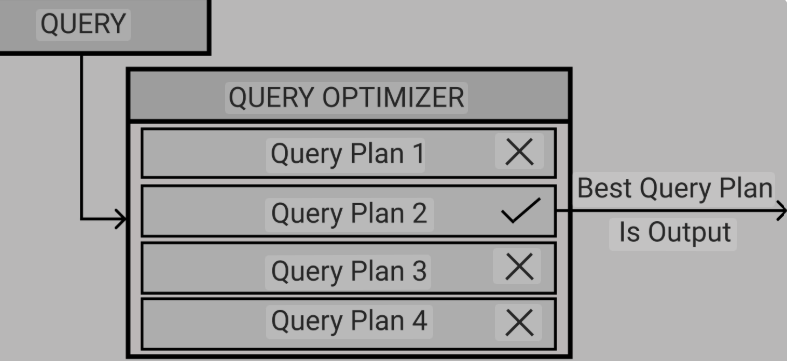02. How does the database create a query plan
How does the database create a query plan?
01. MySQL (and most RDBMS): Execution Plan Selection is Based on Cost Estimation
How it works:
- The query is parsed and analyzed.
- The query optimizer looks at all possible execution plans (e.g., index scan, full table scan, different join orders).
- It does NOT run the plans — instead, it uses statistics (like row count, index selectivity, table size) to estimate the cost of each plan.
- The lowest-cost plan is chosen and executed.
Example: SELECT * FROM orders WHERE customer_id = 123
MySQL checks:
- Is there an index on `customer_id`?
- How many rows match `customer_id = 123` (using index stats)?
- What is the estimated disk I/O and CPU cost?
It chooses the plan with the lowest estimated cost, not the proven fastest.
02. MongoDB: Execution Plan Selection is Based on Trial Execution
How it works:
- MongoDB generates several candidate plans.
- It actually runs each plan for a short time — like a "mini test drive" (Actually each plan is running for some documents).
- It records: How many documents were read, How long it took, How efficient each plan was
- The plan that performs best in trial is used for the full query and cached for reuse.
Example: db.orders.find({ customer_id: 123 })
MongoDB considers:
- Collection scan
- Index scan on `customer_id`
It actually executes each plan for a few documents and Picks the fastest one in practice, not just in theory
Summary Table:
Feature | MySQL (RDBMS) | MongoDB |
Plan Selection Method | Cost-based (theoretical estimate) | Trial-based (actual mini-execution) |
Accuracy of Plan Choice | Depends on accuracy of statistics | Based on real performance |
When Plans Are Evaluated | Before execution | During early phase of execution |
Caching Plan for Reuse | Yes (from version 8.x onward) | Yes (automatically cached) |




Comments
Post a Comment